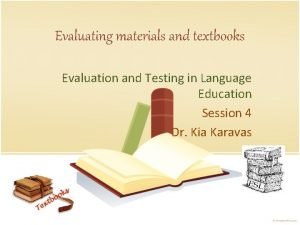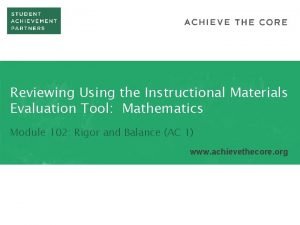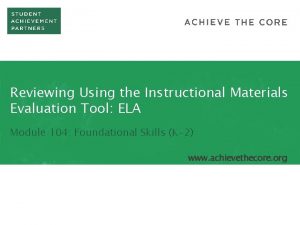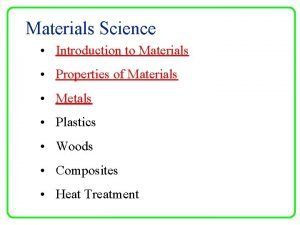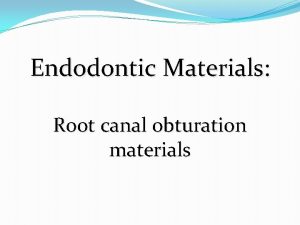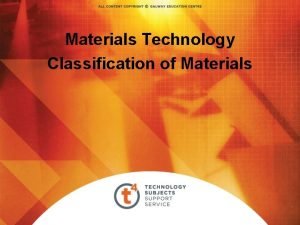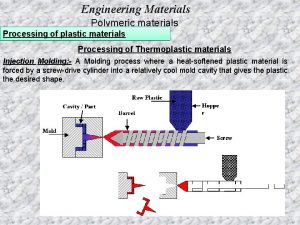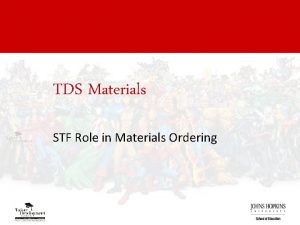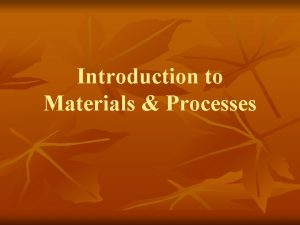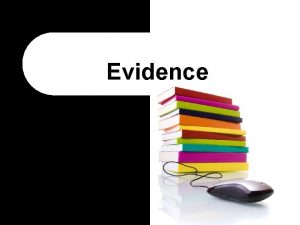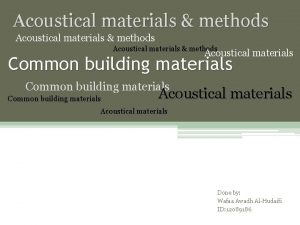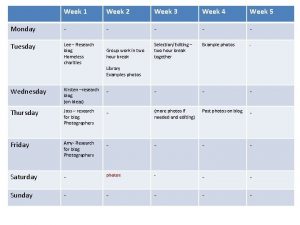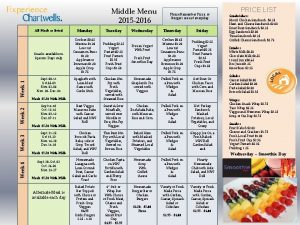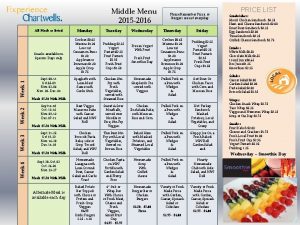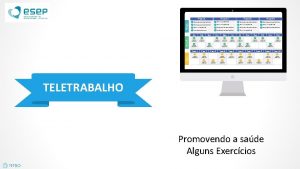Materials Evaluation Week 2 Evaluation Framework The evaluation


















- Slides: 18

Materials Evaluation Week 2 Evaluation Framework

The evaluation of communicative tasks • What kind of evaluation? • Figure 2 in page 225 from the book 1

Approach • Objectives model • Responsive model It requires that curricula be expressed in terms of precise objectives, the achievement of which can be determined by tests that measure learner behaviour and learning outcomes It aims to illuminate the complex nature of the organisational, teaching and learning processes at issue

Purpose • Accountability It is to determine whether the stated goals of the programme have been met. It acquires objective model • Development a) Curriculum improvement b) Teacher development a) To improve the curriculum or b) To foster teacher-development or both

Focus • Effectiveness Is the programme effective in meeting the needs of the learners? • Efficiency Does the programme meet the needs of the learners more effectively than some alternative programme?

Scope • Internal Will focus narrowly on whether the learning predicted by the goals of the programme has been achieved, • External Will whether any unpredicted learning has taken place (i. e. learning not catered for explicitly by the curriculum)

Timing • Formative : • Summative

Type of information 1. 2. 3. 4. Test scores Documentary Self-report Observation

Effectiveness? • How do we find out whether the material meets its goal? • Through checking all the details of

What is Materials Evaluation • The appeal of the materials to the learners • The ability of the materials to interest the learners and the teachers • The ability of the materials to motivate the learners • The value of the materials in terms of short-term learning (important, for example, for performance on tests and examinations) • The assistance given to the teachers in terms of preparation, delivery and assessment • The contribution made by the materials to teacher development • The match with administrative requirements (e. g. , standardization across classes, coverage of a syllabus, preparation for an examination)

Topic contents, Learning principles Appeal and Impact of the materials • The appeal of the materials to the learners • The ability of the materials to interest the learners and the teachers • The ability of the materials to motivate the learners • visuals, examination or needs friendly, sufficient information for teaching guide, flexibility in its usage, contents topics, activities etc.

Teaching Instruction • The contribution made by the materials to teacher development • The teachers’ perceptions of the value of the materials • Teachability, practicability of the materials • The assistance given to the teachers in terms of preparation, delivery and assessment Teachers tend to teach most successfully if they enjoy their role and if they can gain some enjoyment themselves from the materials they are using.

Flexibility of the materials • The reliability of the materials (i. e. , would they have the same effect with different groups of target learners? ) How do we gain this? Learner differences in terms of personality, motivation, attitude, aptitude, prior experiences, interests, needs, wants and preferred learning style. Everyday energy of learning, etc.

Potential for localization Practicability of the materials • The credibility of the materials to learners, teachers and administrators • The validity of the materials ( is what they teach worth teaching? ) • Syllabus of the material should match with what the context require.

Learners learn what they need to • The learners’ perceptions of the value of the materials Contents give opportunities for learning knowledge and new experience Connect the learning experience in the classes to their own life outside the course. Activities give engaging to the learners’ emotions.

Matching with learners’ needs • The value of the materials in terms of short-term learning (important, for example, for performance on tests and examinations) • The match with administrative requirements (e. g. , standardization across classes, coverage of a syllabus, preparation for an examination)

Type of information 1. 2. 3. 4. Test scores Documentary Self-report Observation

Homework • Read chapter 8 and 9 in Book 1, and the articles given to you. • Evaluate one ELT Book using Figure 2 from chapter 8 And the ‘Focus’ & ‘Scope’ in the Figure 2 from chapter 9 in the Book 1 • Read the two articles
 Week by week plans for documenting children's development
Week by week plans for documenting children's development Natural materials
Natural materials Harmful materials
Harmful materials Man made map
Man made map Adopting materials
Adopting materials Direct materials budget with multiple materials
Direct materials budget with multiple materials Dispositional framework vs regulatory framework
Dispositional framework vs regulatory framework Conceptual and theoretical framework example
Conceptual and theoretical framework example Conceptual framework example
Conceptual framework example Conceptual framework theoretical framework
Conceptual framework theoretical framework Dispositional framework vs regulatory framework
Dispositional framework vs regulatory framework Theoretical framework example
Theoretical framework example Checklist for evaluating learning materials
Checklist for evaluating learning materials Instructional materials evaluation tool
Instructional materials evaluation tool Evaluation tool for instructional materials
Evaluation tool for instructional materials Hát kết hợp bộ gõ cơ thể
Hát kết hợp bộ gõ cơ thể Slidetodoc
Slidetodoc Bổ thể
Bổ thể Tỉ lệ cơ thể trẻ em
Tỉ lệ cơ thể trẻ em












